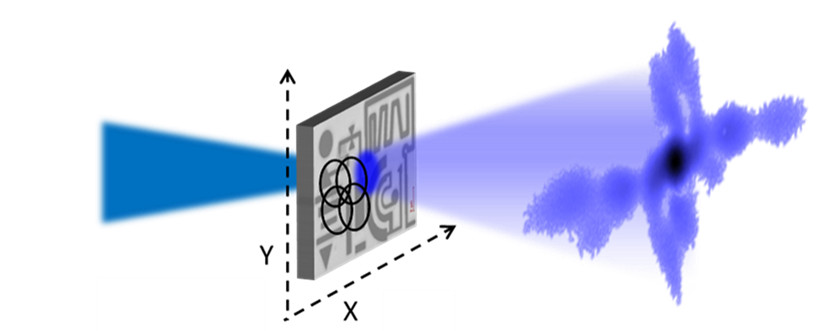HHG
High-order laser harmonic generation (HHG) is a non-linear process in which a target is illuminated by an intense laser pulse and high harmonics of the fundamental frequency are generated. HHG in solids was first reported in 2011 and has been demonstrated in various dielectrics and semiconductors.
We study HHG in crystals as a function of different crystal properties, such as band structure, crystal orientation and doping, as well as different laser parameters, such as wavelength, intensity, polarization, and spatial and temporal shaping of laser pulses.
Read more
In addition to massive crystals, HHG has been observed in 2D structures such as graphene atomic layers and transition metal dichalcogenides. Not only are these structures used as a means of generation, but the behavior of the harmonic signal reveals information about the structural properties of the material, such as its band structure or electronic populations.
Attosecond physics is based on the phenomenon of high-order laser harmonic generation. First demonstrated in gases, it has more recently been demonstrated in semiconductor crystals.
These new “all-solid-state” sources of ultra-shortwave radiation are highly promising, as they require less powerful laser systems and can benefit from advances in optical control and nanofabrication to manipulate the emitted radiation. We are currently setting up a RABBITT device to measure the spectral phase of HHG radiation, which will give us access to the temporal aspect of attosecond electronic dynamics under the effect of the strong field.
Collaborations: Marc Hanna, IOGS (Palaiseau), Prof. Jens Biegert, ICFO (Barcelona), Sébastien Février (XLIM), Angela Vella (GPM).
People: Vijay Sunuganty, Leon Schlemmer, Madhusudhan Pillegowda
Projects: ANR PACHA, ANR ATTOCOM, H2020 PETACOM, H2020 OPTOLOGIC


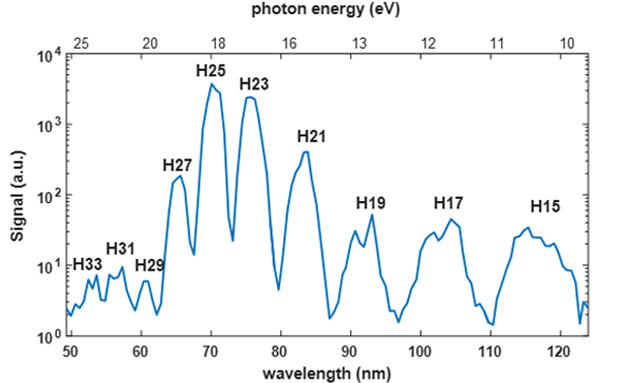
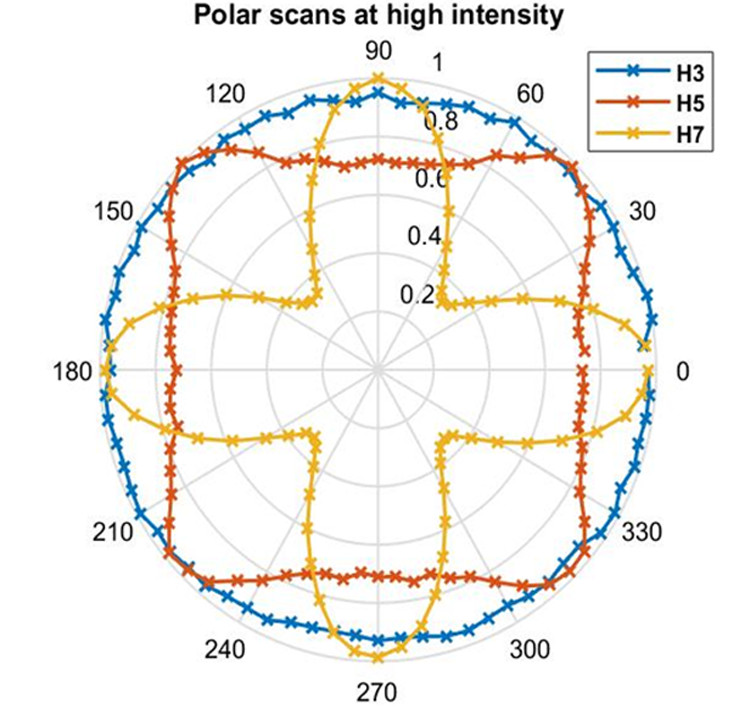
Fundamental aspects of harmonic generation in crystals
Polarization spectroscopy of harmonics
Several electronic mechanisms potentially contribute to the emission of harmonic radiation: inter-band transitions or intra-band electron oscillations within the conduction and valence bands.
By studying the harmonic response as a function of the relative orientation between the crystal axes and the laser polarization, we have been able to identify the contributions of each of these mechanisms in the case of gallium arsenide (GaAs), thanks to the crystal’s unique electronic structure.
Read more
The anisotropy of this response and its variations at low and high intensities thus reveal a competition between intra-band and inter-band processes, resulting from the electronic dynamics specific to the band structure subjected to interaction with the intense laser field.
Publication: Kaassamani et al, Optics Express 30, 40531 (2022)
Light source aspect and spatio-temporal shaping of harmonic emission
By fabricating a micrometric waveguide on the rear face of the crystal, we have developed a harmonic source based on an ultra-compact laser with a very high repetition rate (20MHz, 4mW).
We have demonstrated up to two orders of magnitude gains in conversion efficiency. This ultra-compact source delivers sufficient photon flux for applications such as lens-free microscopy.
Publication
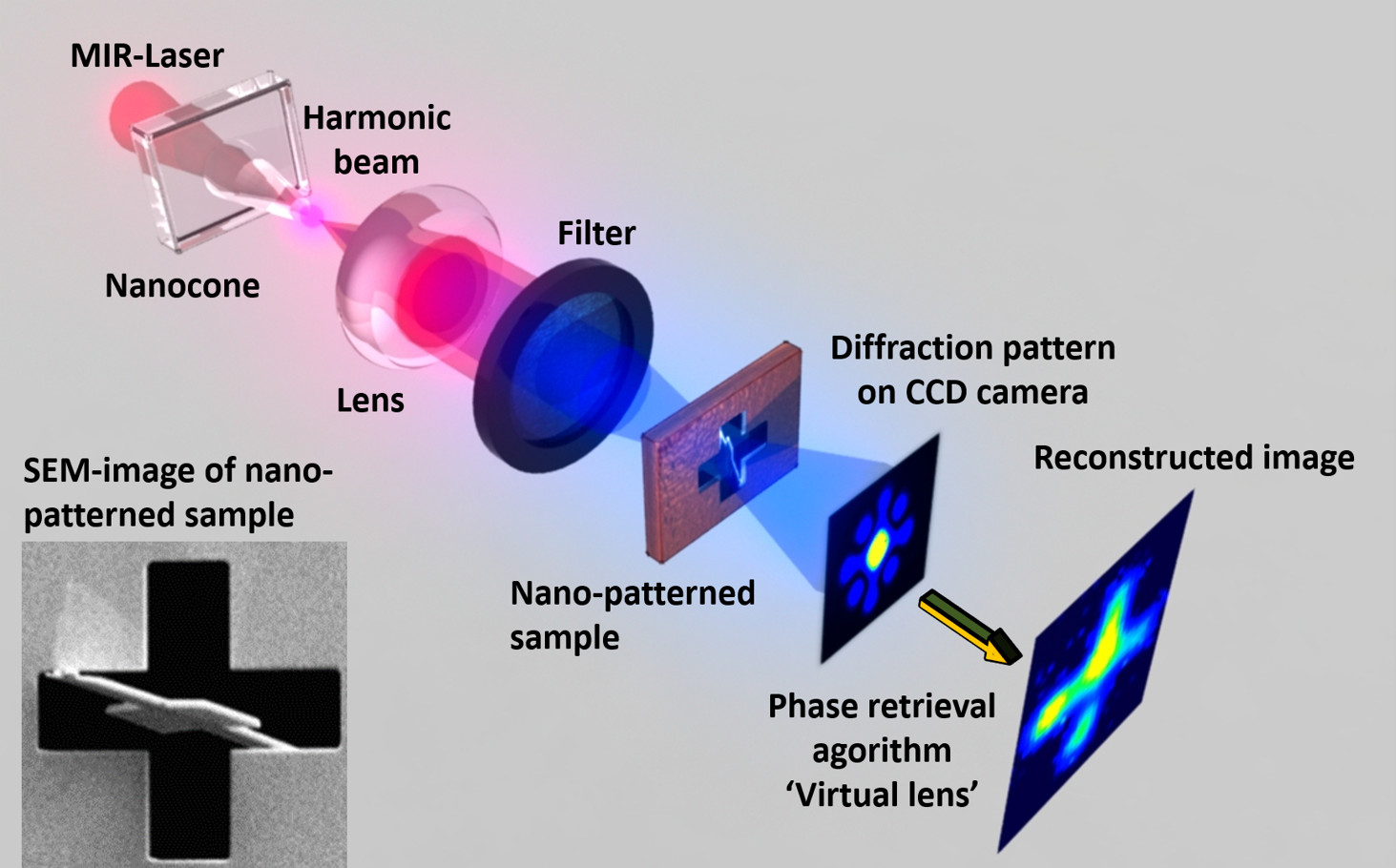
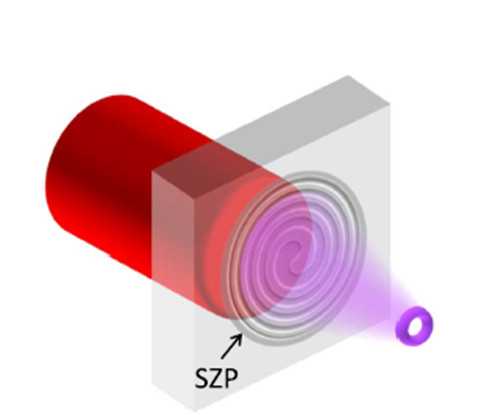
Space-time shaping of HHG emission
By nano-shaping the crystal, we can, for example, control the transfer and conservation of orbital angular momentum from the generating laser to the self-focusing harmonics, thus obtaining controlled, nanometer-sized optical vortices.
By using exotic polarization states of the incident laser, we can control the spin and/or angular momentum of harmonics from 2D monolayer materials such as transition metal dichalcogenides. Finally, by cleverly coupling ultrashort laser pulses whose polarization is controlled on the optical cycle scale with crystal symmetries, it may be possible to generate single attosecond pulses.
Characterization of the spectral phase of the HHG emission by RABBITT, currently being set up, will enable the temporal profile of the EUV pulses to be reconstructed.
Publication
In-situ imaging
Merging lensless imaging and HHG, we have demonstrated a method for imaging an object using a self-probing approach based on the generation of high-order harmonics in crystals.
On the one hand, ptychography enables high-resolution imaging from coherent light diffracted by an object.
On the other hand, the generation of high harmonics from crystals is emerging as a new source of ultrafast coherent light in the extreme ultraviolet.
We combine these two techniques by carrying out ptychography measurements using nanostructured crystals as both object and harmonic generation medium.
Requiring no external source of short-wave radiation, this method could provide an innovative approach to nanoscale imaging of photonic and electronic devices in research and industry.
Publication
